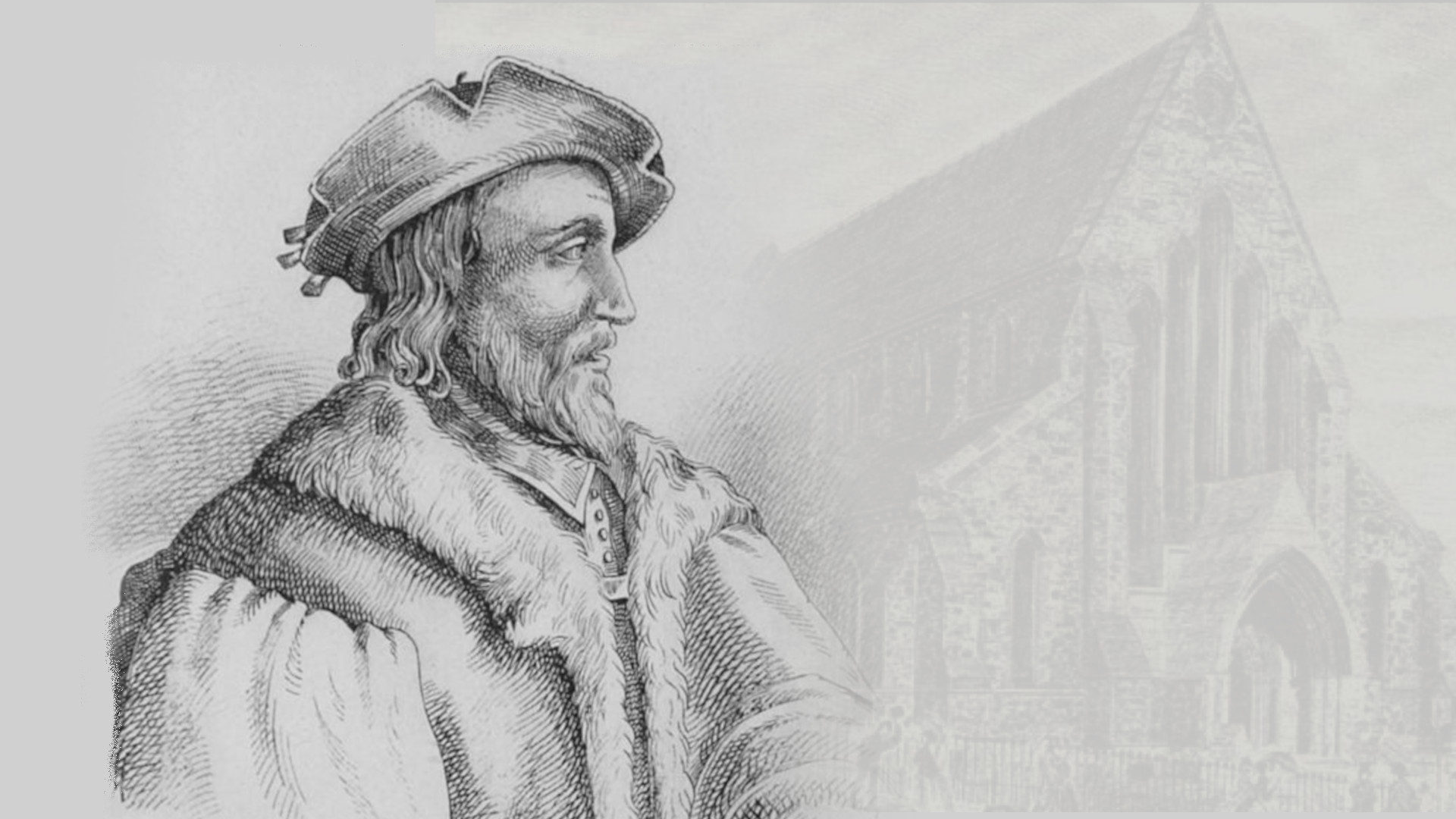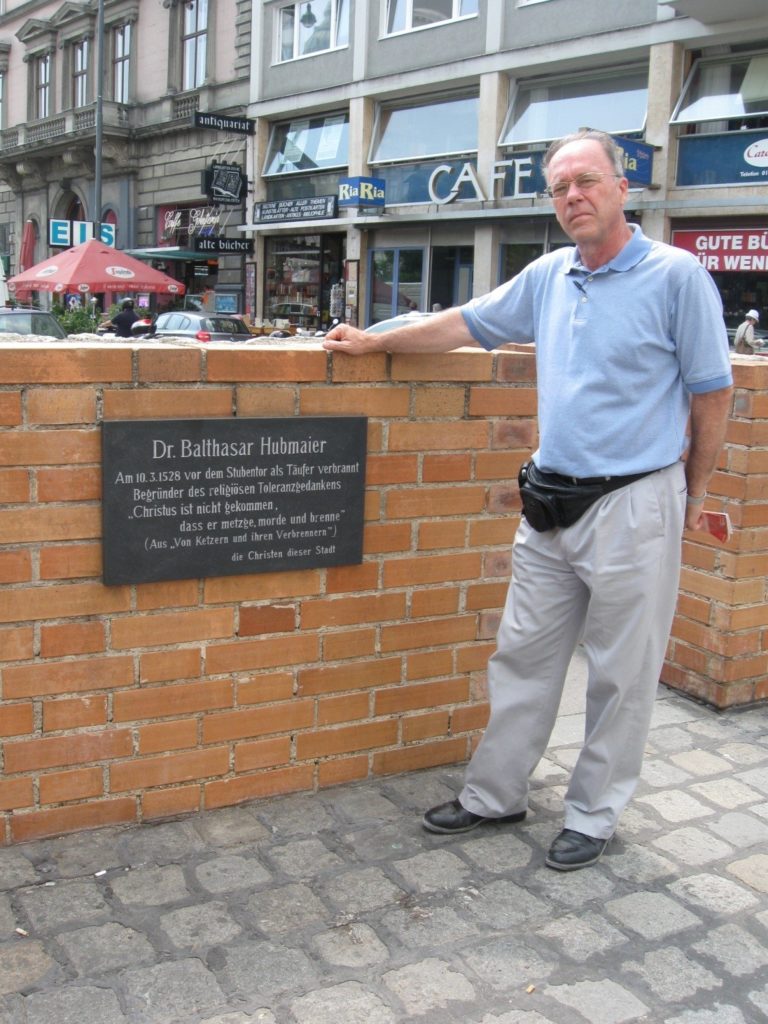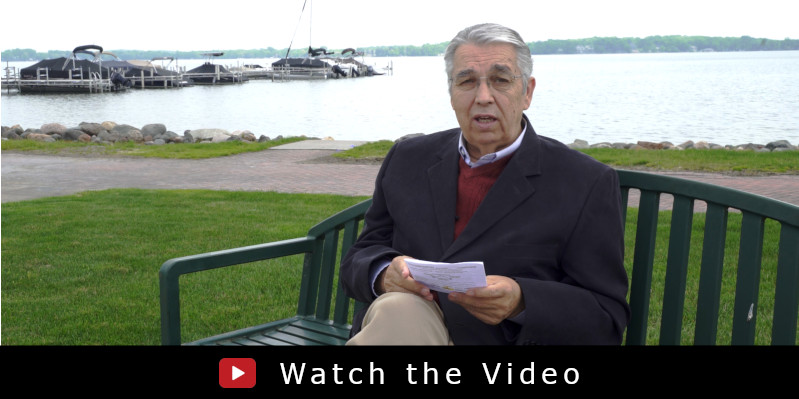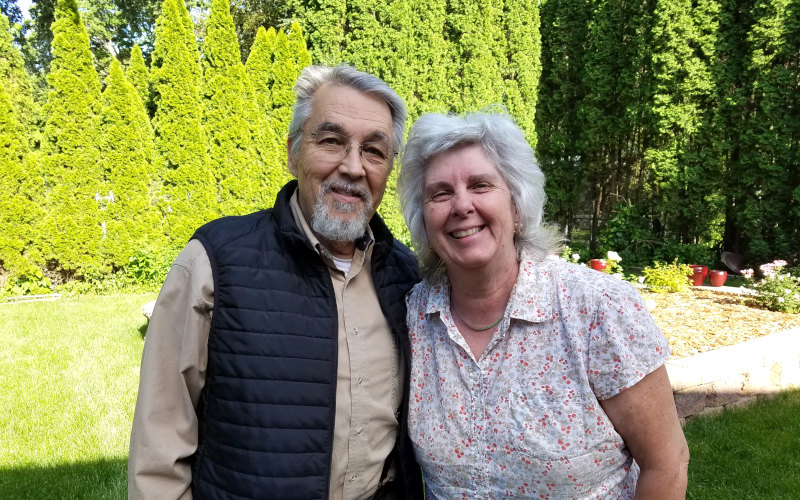Balthasar Hubmaier: Zealous Defender of Truth

Dr. Balthasar Hubmaier was an Anabaptist reformer and arch-heretic of the Catholic Church. This Catholic priest turned reformer began as a promising student and preacher. At some point he had a genuine regeneration experience and gained the spiritual clarity to begin a “Back to the Bible” movement in the small city of Waldshut in Swabia along the Swiss border where the Radical Reformation was beginning to take shape. He quickly became a leading reformer and theologian for the Anabaptist cause and the watershed issue of believer baptism. His book “On the Christian Baptism of Believers” is still considered one of the clearest biblical defenses for believer baptism. By parting with the Catholic Church and being unwilling to recant under torture, he was ultimately led to the stake to be burned. But true to his signature phrase, “Truth is Unkillable,” the truth of God’s Word which he promoted and defended endures. Hubmaier himself is a much studied figure in Reformation history. His life and teachings are preserved in city archives, letters to and from his friends and enemies, and the many books and pamphlets which he authored. Many groups, including Baptists, hold him in high esteem. Giants like Hubmaier have paved the way for modern Baptists to take a separatist and uncompromising stand on the truth of God’s Word.
Life and Ministry
Dr. Hubmaier began his academic life as a loyal son of Catholicism, eager to learn and engage in the philosophical debates of his time. Although he came from a home of little means, he was able to enroll at the University of Friedberg in 1503. There he studied under and befriended Johann Eck, the rector of the school and a future prominent theologian of the Catholic Church. Hubmaier was studious and approached his work with ambitious dedication. He was quickly recognized as an eloquent speaker and preacher. During this time, he also befriended Johann Heigerlin, known as Fabri. Fabri and Eck would later become bitter opponents of Hubmaier the Reformer. Hubmaier received the doctorate of theology from the University of Ingolstadt in 1512.
After working briefly as the vice-rector of the university church, Hubmaier was called to the prestigious position of chief preacher at the new cathedral of Regensburg. There he had a widely successful career, leading a charge to expel the Jews from the city and presiding over the establishment of a new chapel which became a popular pilgrimage site. However, in 1521, he abruptly left Regensburg for the small town of Waldshut on the Swiss border. At the same time, Luther was conducting his reformation in Wittenberg and Hubmaier became acquainted with his writings as well as those of Erasmus. He soon returned to Regensburg, but was slowly becoming convinced of the truth of Luther’s sola fide so that he began to claim to preach a Lutheran gospel. On Passion Sunday, 1523, Hubmaier boldly condemned the evils of the Catholic Church and her priests, after which he abruptly left again for Waldshut. It may be that he felt Waldshut would be the better location to conduct a reformation, but at least one writer suggests that he left Regensburg over a new disagreement with Luther about the nature of faith.1
Hubmaier’s reformation began in earnest in Waldshut, though change would come over a period of time as he studied, interacted with other reformers, and developed his evangelical convictions. The people of Waldshut became his loyal followers and supported him through his political and religious battle with the Catholic Church even while their town was threatened with war because of his presence. Due to Hubmaier’s heresy and because Waldshut was a traditionally loyal city on the verge of being caught up in the Swiss revolution, Austria wanted him handed over. Waldshut refused and sought help of the sympathetic city of Zurich where Zwingli was carrying out his own reformation.
Zwingli and Hubmaier had made acquaintances and Hubmaier was invited to take part in the Second Disputation of Zurich in 1523 where the topics of the Catholic mass and images were discussed. There he met the “radical” Conrad Grebel and other Swiss reformers. Hubmaier largely agreed with Zwingli and offered good verbal arguments in his support. Around the same time, he began to discuss the issue of the Lord’s Supper and believer baptism over against infant baptism with Zwingli and his counterparts. However, the Zurich city council was not favorable to the latter position, and Zwingli backed away from his initial convictions to maintain political harmony. That was the tip of the wedge that would drive the Swiss Radicals and Hubmaier to separate with Zwingli and the Magisterial Reformers.
Waldshut experienced increasing pressure to surrender Hubmaier, declare their loyalty to Austria, and return to the Catholic faith. They exercised all means to defend themselves against Austrian forces, including accepting mercenaries from Zurich, joining with the peasants in their Peasant’s War, and launching legal defenses of their actions. Eventually due to political circumstances and Hubmaier’s views on baptism, Waldshut’s relationship with Zurich cooled, and surrender became their only recourse. In order to spare the city further harm from his presence, Hubmaier fled to the free reformation city of Schaffhausen in Switzerland where he had spent some time previously and then on to Zurich.
In 1524, while still in Waldshut, Hubmaier began to study the issue of believer baptism in earnest. Zwingli and his Swiss counterparts were debating believer baptism, which the Radicals, labeled Anabaptists by Zwingli, held to be the only biblical position. On January 17th, 1525, Zwingli held a disputation with the Anabaptists. The Zurich city council announced Zwingli’s side as the victors in the debate, and a mandate was issued requiring all citizens to have their children baptized or be expelled from Zurich. Anabaptist leaders George Blaurock and Felix Mantz were imprisoned, and Grebel, Brotli, and Reublin were forced to leave. Reublin fled to Waldshut and met with Hubmaier, finding him receptive to believer baptism. By this time Hubmaier was fully convinced of the truth, but had not yet put it into practice. Reublin then baptized Hubmaier along with sixty others, and “on Easter day Hubmaier baptized over three hundred men out of a milk-pail filled with water from the well, brought into the church and placed on the font, which soon after was thrown into the Rhine as a papal relic.”2
Hubmaier, for his part, greatly aided the Anabaptists by publishing his book “On the Christian Baptism of Believers” in June of 1525. This was widely received and distinguished Hubmaier as a theologian and leader of the Anabaptist cause. The popularity of Hubmaier’s book and the spread of Anabaptism prompted the greatly alarmed Zwingli to hold a second disputation on March 20th. The outcome was that Mantz was again imprisoned, Blaurock was forced into exile, and others set free upon recanting. In November of the same year a third disputation was held with Grebel, Mantz, and Blaurock in attendance. Once again the Zurich city council handed the victory to Zwingli and the punishment for rebaptizing became death by drowning, with Mantz becoming the first to suffer the fate. Hubmaier had attempted to attend this disputation, but was prevented due to illness and the political situation in Waldshut. However, upon fleeing Waldshut, he eventually made his way secretly into Zurich and was quickly discovered and arrested. Upon interrogation by Zwingli, Hubmaier announced his intention to recant, possibly because he feared being handed over to the Austrians who were seeking his extradition. The punishment for capital heresy was burning, drowning, or beheading. Zwingli gladly accepted Hubmaier’s recantation in writing, and instructed that he should read it aloud before three churches. However, Hubmaier had a change of heart. At the church in Fraumunster, he stood up and to the surprise of everyone stated, “Oh, what anguish and travail I have suffered this night over the statements which I myself have made. I say here and now, I cannot and I will not recant,” after which he defended believer baptism until Zwingli interrupted him.3 Following this outburst, Hubmaier was marched to prison and tortured on the rack. We can understand his willingness to recant once again after facing the rack three times and suffering in prison where the Anabaptists were held alongside the rotting corpses of the dead. After writing out his confession and reading it publicly in three churches, Hubmaier was set free.
Upon his release from prison, Hubmaier spent a short time in Constance and Augsburg before making his way to the free and Anabaptist-friendly city of Nickolsburg, Moravia. There he met and influenced Hans Hut and Hans Denck, and together the three men became a great force for the Reformation. Hubmaier attracted a considerable following and Anabaptists from around the region immigrated to Nickolsburg to take advantage of the freedom and join the movement. He also made acquaintances with the nobles of the region and was able to win some over to the Anabaptist belief. Nickolsburg offered Hubmaier the liberty and the means to print many booklets and tracts. During this time he focused less on believer baptism and turned to other areas, such as church discipline. Some of his later important works include “On the Christian Ban,” two treatises of “Freedom of the Will,” and “On the Sword.” Hubmaier’s time in Nickolsburg was fruitful, but short lived. In 1528, one of his old enemies, Prince Ferdinand, had gained control of Bohemia and Nickolsburg. Hubmaier and his wife were promptly arrested and led to Vienna for trial. There, he was once again tortured on the rack and urged, by none other than his old friend Fabri, to make a full recantation. But he had grown in the strength of his convictions since his days in Zurich, and he steadfastly refused. On March 10th, Hubmaier was led bravely to the stake to be burned, but not before praising God and forgiving his enemies. Three days later his wife was drowned in the river Danube.

The plaque reads:
Dr. Balthasar Hubmaier,
Burned on Mar 10, 1528 in front of the house door (gate).
Founder of the religious tolerance belief “Christ is not come to slaughter, murder and burn”, from “About Heretics and their burning”
The Christians of this town
Theology
The main cause of the Reformation was the disconnect which the reformers saw between the biblical doctrine of the church and the nature and state of the Catholic Church. Because of the excessive corruption of the Church and priestly class, the Radicals strove for restitution rather than reformation. They desired purity, and this necessitated a church that is independent of the state and composed of a voluntary, regenerated membership. Their ecclesiology, therefore, and to a lesser extent their eschatology, provided a framework upon which to hang their other doctrines. For Hubmaier, the prerequisites for belonging to a church were a personal salvation experience, presentation to the church for baptism, and living a saintly life.4
Hubmaier spoke of two aspects of the church: universal and local. The universal church consists of “all people who are gathered and united in one God, one Lord, one faith, and one baptism, and have confessed this faith with their mouths, wherever they may be on earth.”5 Local churches are the separate, outward gatherings that voluntarily assemble under one shepherd for instruction and to practice the ordinances. Local churches may err, just as the Catholic Church had erred, but the universal church is controlled by the Holy Spirit and cannot err. The primary safeguards against error were believer baptism and church discipline, called the “ban.”
Hubmaier’s soteriology was influenced by Luther’s emphasis on faith and the humanism taught by Erasmus and others from his earlier university days. He held to some form of nominalism, which distinguishes God’s absolute power from His ordained power. Man is truly free within the limits of God’s ordained power. Man was created as a tripartite being – spirit, soul, and flesh – with only the soul and flesh affected by the fall. Therefore, man’s spirit is able to turn to God in repentance and faith through the enabling, inner illumination of the Spirit. With his ecclesiology and soteriology as a backdrop, we can understand how Hubmaier differed sharply with Luther and Zwingli in refusing to allow infant baptism. Baptism is the right response of the believer who has freely accepted God’s grace in salvation.
Hubmaier gave a thorough, compelling, Scriptural argument for believer baptism in his popular and enduring book, “On the Christian Baptism of Believers.” He pointed to the offices of John and the apostles, and the baptism of Christ to show that the order given in the NT is always: 1) word, 2) hearing, 3) change of life or recognition of sin, 4) baptism, 5) works. Commenting on Acts 2:38, he stated, “It is not that only through [baptism] or in it sin is forgiven but by the power of the internal ‘Yes’ in the heart which the person proclaims publicly…that he believes and is already sure in his heart of the remission of sins through Jesus Christ.” 6 He claimed that Scripture forbids infant baptism by explicitly commanding believer baptism in Matthew 28. He placed great emphasis on preaching and the recognition of sin preceding baptism. Through baptism, the believer covenanted with God and the church to live righteously and to submit to church discipline. In a letter to Zwinglian reformer Oecolampadius, he stated, “…the bonding signified by that sign and symbol (whereby for the sake of the faith… one binds oneself to God even unto death) should be valued more seriously than the sign itself.” In his book on baptism, he stated, “Baptism in water…is nothing other than a public confession and testimony of internal faith and commitment by which the person also testifies outwardly and declares before everyone that he is a sinner.” When a candidate was presented for baptism, the church would pray on their knees that God by His Spirit would complete the work that was begun in the inner regeneration (Phil. 1:3-6).
As baptism is a bond with God for the renunciation of sin, so the Lord’s Supper is a bond of commitment to sacrifice oneself in love for others as Christ did for us. It is a pledge of obedience to God, other believers, and government. In “A Simple Instruction”, Hubmaier listed fifteen erroneous views of the Eucharist, wherein he rejects the corporeal presence of the Lord, and also seems to disagree that the bread is only a sign and memorial of the body of Christ. This latter view stems from the fact that the Supper is a pledge, not that it is in any sense a sacrament. In Hubmaier’s first Waldshut disputation address, as translated by Estep, he states, “Faith alone makes us holy before God…The mass is not a sacrifice but a remembrance of the death of Christ. Therefore, it is not an offering for the dead nor for the living.” 7
Conclusion
Dr. Hubmaier and his followers did much to promote the spread of Anabaptism until his life was mercilessly taken by his Catholic enemies. He was tried on trumped up charges of sedition because he did not openly oppose the peasant uprising in his Waldshut days. The real reason, of course, was because of his status as an arch-heretic – one who boldly stands on the truth of Scripture over against the traditions of men while counting the cost. This heretic, who had years earlier called the inquisitors the true heretics in his work “On Heretics and Those Who Burn Them,” was burned for his beliefs. Though Hubmaier was a product of a religious culture where the state is the church, the sacerdotal class stands over the laity, and traditions displace the Sacred Word, he was yet able to navigate through the fog by unrelenting study of God’s Word.
Footnotes
- Kirk R. MacGregor, A Central European Synthesis of Radical and Magisterial Reform: The Sacramental Theology of Balthasar Hubmaier, (Lanham, Md: University Press of America, 2006), 113.
- Henry C. Vedder, Balthasar Hübmaier, the Leader of the Anabaptists, (New York: G.P. Putnam’s Sons, 1905), 112.
- H. Wayne Pipkin, and John Howard Yoder. Balthasar Hubmaier, Theologian of Anabaptism, (Scottdale, Pa: Herald Press, 1989), 151.
- Eddie Louis Mabry, Balthasar Hubmaier’s Doctrine of the Church, (Lanham, Md: University Press of America, 1994), 71-73, 90.
- Hubmaier, “A Christian Catechism,” in Pipkin, 351-352.
- Hubmaier, “On the Christian Baptism of Believers,” in Pipkin, 118.
- Torsten Bergsten and William Roscoe Estep, Balthasar Hubmaier: Anabaptist Theologian and Martyr, (Valley Forge: Judson Press, 1978), 82.




